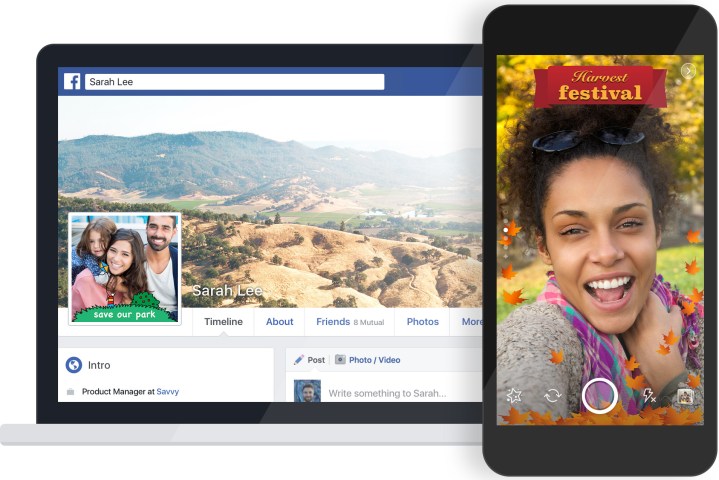
Facebook now lets users create their own frames (essentially, graphics that can be overlaid on images and videos) via its new Camera Effects platform. The move sees Facebook take an existing feature — in this case it’s the profile frames the social network introduced last year — and add personalization to the mix. Users will also be able to add location details to their designs in order to visually represent places such as cities, neighborhoods, and landmarks — much like Snapchat’s custom geofilters.
If you’re game, you can start by creating your graphic using the design tool of your choice. Make sure to save your masterpiece as a PNG with a transparent background and then upload it to Facebook. Next, you’ll have to arrange your design to fit Facebook’s template, after which you can preview your frame in both landscape and portrait mode. As previously mentioned,
In general, the tool doesn’t sound like its meant for individual use. Like custom geofilters, frames are aimed toward people planning events or special occasions (such as weddings, and birthdays) where multiple attendees can use the graphic. It’s easy to see business Pages, brands, and companies taking advantage of the Camera Effects platform to promote causes, products, and conferences.
At launch, the tool is only available in the United Kingdom, Colombia, Mexico, and Taiwan. Facebook is also integrating frames within its experimental camera function — itself a Snapchat clone — currently being tested in Ireland.
Editors' Recommendations
- Snapchat Plus is now live, and feels a whole lot like Twitter Blue
- Here’s what Facebook’s new Oversight Board looks like
- Bitmoji-like Facebook Avatars makes emoji stickers look like you


